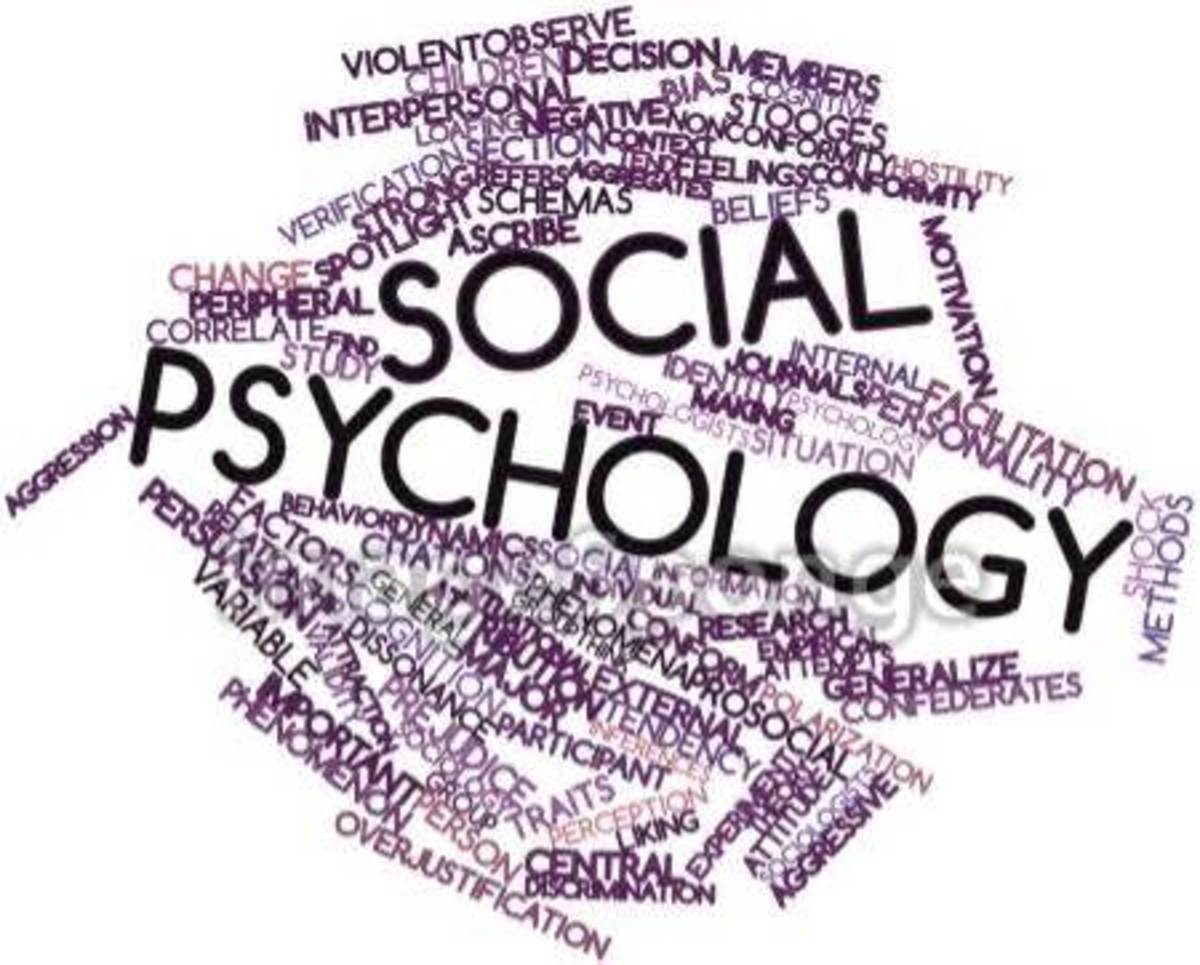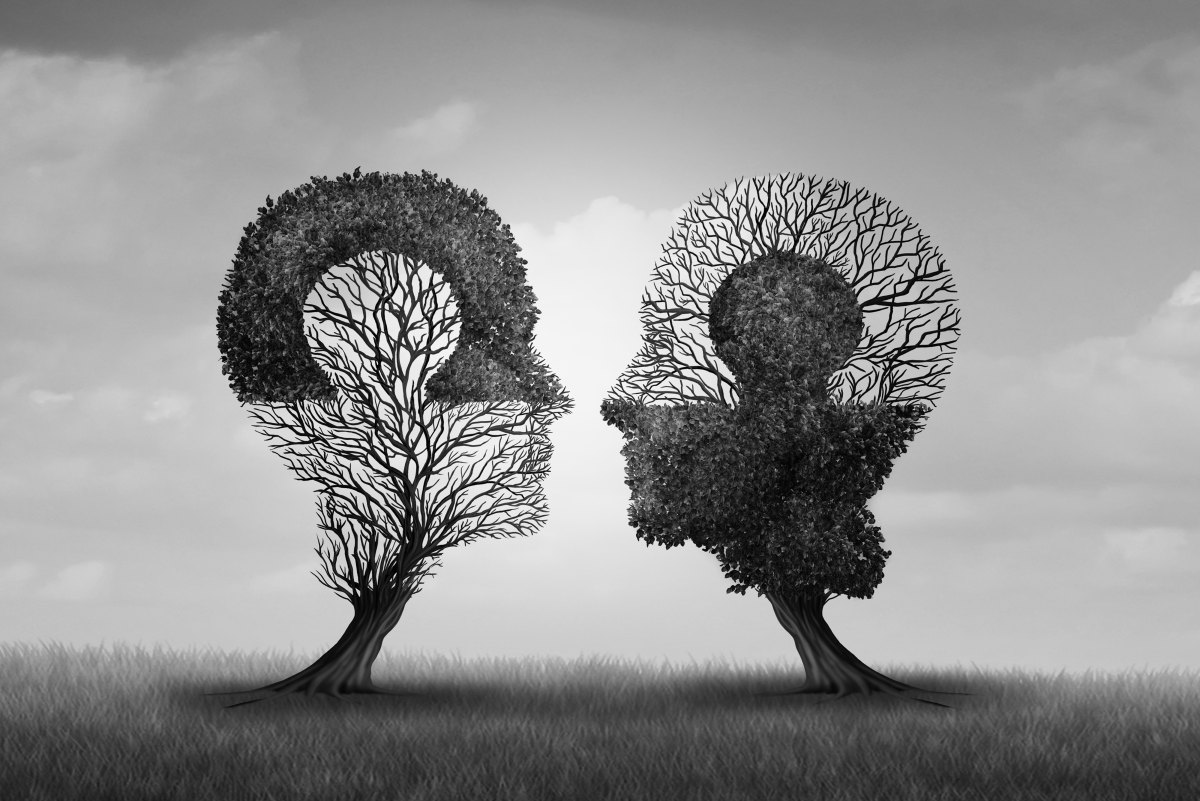SNHU: Abnormal Psychology Chapter 1 Notes
Psy-215: Abnormal Psychology
Chapter 1: Overview to Understanding Abnormal Behavior
- Case Report: Rebecca Hasbrouck
- Demographic information: 18-year-old Caucasian female.
- Presenting problem: Rebecca self-referred to the university psychotherapy clinic. She is a college freshman, living away from home for the first time. After the first week of school, Rebecca reports that she is having trouble sleeping, is having difficulty concentrating in her classes, and often feels irritable. She is frustrated by the difficulties of her coursework and states she is worried that her grades are beginning to suffer. She also reports that she is having trouble making friends at school and that she has been feeling lonely because she has no close friends here with whom she can talk openly. Rebecca is very close to her boyfriend of three years, though they have both started attending college in different cities. She was tearful throughout our first session, stating that, for the first time in her life, she feels overwhelmed by feelings of hopelessness. She reports that although the first week at school felt like “torture,” she is slowly growing accustomed to her new lifestyle, but she still struggles with missing her family and boyfriend, as well as her friends from high school.
- Relevant past history: Rebecca has no family history of psychological disorders. She reported that sometimes her mother tends to get “really stressed out” though she has never received treatment for this.
- Symptoms: Depressed mood, difficulty falling asleep (insomnia), difficulty concentrating on schoolwork. She reported no suicidal ideation.
- Case formulation: Although it appeared at first as though Rebecca was suffering from a major depressive episode, she did not meet the diagnostic criteria. While the age of onset for depression tends to be around Rebecca's age, given her lack of a family history of depression and that her symptoms were occurring in response to a major stressor, the clinician determined that Rebecca was suffering from Adjustment Disorder with depressed mood.
- Treatment plan: The counselor will refer Rebecca for psychotherapy. Therapy should focus on improving her mood, and also should allow her a space to discuss her feelings surrounding the major changes that have been occurring in her life.
- Ø 1.1: What Is Abnormal Behavior?
- It's possible that you know someone very much like Rebecca, who is suffering from more than the average degree of adjustment difficulties in college. Would you consider that person psychologically disturbed? Would you consider giving this person a diagnosis?
- What if a person you knew was not only depressed, but also showed up on your floor seemingly ready to harm herself? At what point do you draw the line between someone who has a psychological disorder and someone who, like Rebecca, has an adjustment disorder?
- Is it even necessary to give Rebecca any diagnosis at all?
- Until they are forced to face such problems, most people believe that “bad things” happen only to other people.
- Other people have car accidents, succumb to cancer, or become severely depressed. Known as “other people” syndrome.
- Psychological disorders are part of the human experience, touching the life—either directly or indirectly—of every person.
- Ø 1.2: The Social Impact of Psychological Disorders pg.5
- People with psychological disorders often face situations in which the people close to them aren't sure how to respond to their symptoms. Such people often experience profound and long-lasting emotional and social effects even after their symptoms are brought under control and they can resume their former lives.
- Social attitudes toward people with psychological disorders range from discomfort to outright prejudice.
- Language, humor, and stereotypes all portray psychological disorders in a negative light and people often fear that people suffering from these disorders are violent and dangerous.
- There seems to be something about a psychological disorder that makes people want to distance themselves from it as much as possible.
- The result of these stereotypes is social discrimination, which only serves to complicate the lives of the afflicted even more.
- Ø 1.3: Defining Abnormality
- The mental health community currently uses diagnostic procedures to decide on whether a given individual fits the criteria for abnormality. There are currently five criteria for a psychological disorder.
- Clinical significance- meaning that the behavior involves a measurable degree of impairment. The behavior must also have diagnostic validity, meaning that the diagnoses predict future behavior or responses to treatment.
- The behavior reflects a dysfunction in psychological, biological, or developmental processes.
- The behavior usually is associated with significant distress or disability in important realms of life.
- The individual's behavior cannot be socially “deviant” as defined in terms of religion, politics, or sexuality.
- Conflicts between the individual and society are not counted as psychological disorders unless they reflect a dysfunction within the individual.
- Ø 1.4: What Causes Abnormal Behavior?
- We can best conceptualize abnormal behavior from multiple perspectives that incorporate biological, psychological, and sociocultural factors.
- Biological Causes- genetic and environmental influences on physical functioning.
- People with psychological disorders may inherit a predisposition to developing behavioral disturbances.
- There are also physiological changes that affect behavior, which other conditions in the body cause, such as brain damage or exposure to harmful environmental stimuli.
- Ex. - a thyroid abnormality can cause a person's moods to fluctuate widely. Brain damage resulting from a head trauma can result in aberrant thought patterns. Toxic substances or allergens in the environment can also cause a person to experience disturbing emotional changes and behavior.
- Psychological Causes- involves disturbances in thoughts and feelings.
- There are a variety of alternative explanations of abnormal behavior. They include factors such as past learning experiences, maladaptive thought patterns, and difficulties coping with stress.
- Treatment models based on these theoretical perspectives reflect these varying assumptions.
- Sociocultural Causes- refers to the various circles of influence on the individual
- Refers to the various circles of influence on the individual ranging from close friends and family to the institutions and policies of a country or the world as a whole.
- Discrimination, whether based on social class, income, race and ethnicity, or gender, can influence the development of abnormal behavior.
- Social stigmas associated with being “mental patients” can further affect symptoms.
- A stigma is a label that causes us to regard certain people as different, defective, and set apart from mainstream members of society. It increases the burden for them and for their loved ones.
- A stigma deters people from obtaining badly needed help, and thereby perpetuates a cycle in which many people in need become much worse.
- Ex. - European-American adolescents and their caregivers are twice as likely as members of minority groups to define problems in mental health terms or to seek help for such problems
- The Biopsychosocial Perspective
- Biological
- Genetic inheritance
- Physiological changes
- Exposure to toxic substances
- Psychological
- Past learning experiences
- Maladaptive thought patterns
- Difficulties coping with stress
- Sociocultural
- Social policies
- Discrimination
- Stigma
- Disturbances in any of these areas of human functioning can contribute to the development of a psychological disorder.
- Social scientists use the term biopsychosocial to refer to the interaction in which biological, psychological, and sociocultural factors play a role in the development of an individual's symptoms.
- Biopsychosocial factors interact to alter the individual's expression of behavioral patterns over time.
- For some disorders, such as schizophrenia, biology plays a dominant role. For other disorders, such as stress reactions, psychological factors predominate. For other conditions, such as post-traumatic stress disorder, that result, for example, from experiences under a terrorist regime, the cause is primarily sociocultural.
- Certain life experiences can protect people from developing conditions to which they are vulnerable.
- Protective factors, such as loving caregivers, adequate health care, and early life successes, reduce vulnerability considerably.
- Low vulnerability can heighten when people receive inadequate health care, engage in risky behaviors (such as using drugs), and get involved in dysfunctional relationships.
- The bottom line is that we can best conceptualize abnormal behavior as a complex interaction among multiple factors.
- Ø 1.5: Prominent Themes in Abnormal Psychology throughout History
- Three prominent themes in explaining psychological disorders recur throughout history: the spiritual, the scientific, and the humanitarian.
- Spiritual explanations regard abnormal behavior as the product of possession by evil or demonic spirits.
- The earliest approach to understanding abnormal behavior is spiritual; the belief that people showing signs of behavioral disturbance were possessed by evil spirits.
- Skulls of the living had holes cut out of them, a process called “trephining,” apparently in an effort to release the evil spirits from the person's head.
- Another ancient practice was to drive away evil spirits through the ritual of exorcism, a physically and mentally painful form of torture carried out by a shaman, priest, or medicine man.
- Society considered people with psychological difficulties sinners, witches, or embodiments of the devil, and they were punished severely.
- Biological
- Humanitarian explanations view psychological disorders as the result of cruelty, stress, or poor living conditions.
- The humanitarian approach developed throughout history, in part as a reaction against the spiritual approach and its associated punishment of people with psychological disorders.
- Poorhouses and monasteries became shelters, and although they could not offer treatment, they provided some protective measures.
- Ex. - Society widely believed that psychologically disturbed people were insensitive to extremes of heat and cold, or to the cleanliness of their surroundings. Their “treatment” involved bleeding, forced vomiting, and purging.
- By the end of the eighteenth century, hospitals in France, Scotland, and England attempted to reverse these harsh practices.
- The idea of “moral treatment” took hold—the notion that people could develop self-control over their behaviors if they had a quiet and restful environment. Institutions used restraints only if absolutely necessary, and even in those cases the patient's comfort came first.
- Conditions in asylums again began to worsen in the early 1800s as facilities suffered from overcrowding and staff resorted to physical punishment to control the patients. In 1841, a Boston schoolteacher named Dorothea Dix (1802–1887) took up the cause of reform. The humanitarian goals that Dix advocated had a lasting influence on the mental health system. Her work was carried forward into the twentieth century by advocates of what became known as the mental hygiene movement.
- The federal government took emphatic action in 1963 with the passage of groundbreaking legislation. The Mental Retardation Facilities and Community Mental Health Center Construction Act of that year initiated a series of changes that would affect mental health services for decades to come. Legislators began to promote policies designed to move people out of institutions and into less restrictive programs in the community, such as vocational rehabilitation facilities, day hospitals, and psychiatric clinics. After their discharge from the hospital, people entered halfway houses, which provided a supportive environment in which they could learn the necessary social skills to re-enter the community.
- By the mid-1970s, the state mental hospitals, once overflowing with patients, were practically deserted. These hospitals freed hundreds of thousands of institutionally confined people to begin living with greater dignity and autonomy. This process, known as the deinstitutionalization movement, promoted the release of psychiatric patients into community treatment sites.
- Many of the promises and programs hailed as alternatives to institutionalization ultimately failed to come through because of inadequate planning and insufficient funds.
- Patients shuttled back and forth between hospitals, halfway houses, and shabby boarding homes, never having a sense of stability or respect.
- Scientific explanations look for causes that we can objectively measure, such as biological alterations, faulty learning processes, or emotional stressors.
- Early Greek philosophers were the first to attempt a scientific approach to understanding psychological disorders. Hippocrates (ca. 460–377 B.C.), considered the founder of modern medicine, believed that there were four important bodily fluids that influenced physical and mental health, leading to four personality dispositions. To treat a psychological disorder would require ridding the body of the excess fluid.
- Rush supported the use of bloodletting and purging in the treatment of psychological disorders as well as the “tranquilizer” chair, intended to reduce blood flow to the brain by binding the patient's head and limbs.
- Rush recommended submerging patients in cold shower baths and frightening them with death threats. He thought that fright inducement would counteract the overexcitement that he believed was responsible for the patients' violent behavior.
- In 1844, a group of 13 mental hospital administrators formed the Association of Medical Superintendents of American Institutions for the Insane. The organization eventually changed its name to the American Psychiatric Association.
- The scientific approach to psychological disorders also gained momentum as psychiatrists and psychologists proposed behavior models that included explanations of abnormality. In the early 1800s, European physicians experimented with hypnosis for therapeutic purposes. Eventually, these efforts led to the groundbreaking work of Viennese neurologist Sigmund Freud (1856–1939), who in the early 1900s developed psychoanalysis, a theory and system of practice that relied heavily on the concepts of the unconscious mind, inhibited sexual impulses, and early development.
- Throughout the twentieth century, psychologists developed models of normal behavior, which eventually became incorporated into systems of therapy. The work of Russian physiologist Ivan Pavlov (1849–1936), known for his discovery of classical conditioning, became the basis for the behaviorist movement begun in the United States by John B. Watson (1878–1958).
- B. F. Skinner (1904–1990) formulated a systematic approach to operant conditioning, specifying the types and nature of reinforcement as a way to modify behavior.
- In the twentieth century, these models continued to evolve into the social learning theory of Albert Bandura, the cognitive model of Aaron Beck, and the rational-emotive therapy approach of Albert Ellis (1913–2007).
- In the 1950s, scientists experimenting with pharmacological treatments invented medications that for the first time in history could successfully control the symptoms of psychological disorders.
- Most recently, the field of abnormal psychology is benefiting from the positive psychology movement, which emphasizes the potential for growth and change throughout life.
- The movement views psychological disorders as difficulties that inhibit the individual's ability to achieve highly subjective well-being and feelings of fulfillment.
- In addition, the positive psychology movement emphasizes prevention rather than intervention. Instead of fixing problems after they occur, it would benefit people more if they could avoid developing symptoms in the first place.
- Ø 1.6: Research Methods in Abnormal Psychology
- The scientific approach led to significant advances in the understanding and treatment of abnormal behavior.
- The essence of the scientific method is objectivity, the process of testing ideas about the nature of psychological phenomena without bias before accepting these ideas as adequate explanations.
- The scientific method involves a progression of steps from posing questions of interest to sharing the results with the scientific community. Throughout the scientific method, researchers maintain the objectivity that is the hallmark of the scientific approach. This means that they do not let their personal biases interfere with the data collection or interpretation of findings. In addition, researchers must always be open to alternative explanations that could account for their findings.
- The scientific method is based on objectivity; this does not mean that scientists have no personal interest in what they are studying.
- Ø 1.7: Experimental Design
- When using experimental design in research, an investigator sets up a test of a hypothesis by constructing a manipulation of a key variable of interest. The variable that the investigator manipulates is called the independent variable, meaning that the investigator controls it. The investigator sets up at least two conditions that reflect different levels of the independent variable. In most cases, these conditions are the “experimental” or treatment group (the group that receives the treatment) and the “control” group (the group that receives no treatment or a different treatment). The researchers then compare the groups on the dependent variable, which is the variable that they observe. Key to the objectivity of experimental research is the requirement that the researchers always randomly assign participants to the different groups.
- The majority of true experimental studies in abnormal psychology, at least those on humans, test not the causes of abnormal behavior, but the effectiveness of particular treatments where it is possible to design randomly assigned control and experimental groups. Investigators evaluate a treatment's effectiveness by comparing the groups on dependent variables such as symptom alleviation.
- It is common practice in studies evaluating therapy effectiveness to have a placebo condition in which participants receive a treatment similar to the experimental treatment, but lacking the key feature of the treatment of interest.
- Expectations about the experiment's outcome can affect both the investigator and the participant. These so-called “demand characteristics” can compromise the conclusions about the intervention's true effectiveness. Obviously, the investigator should be as unbiased as possible, but there still may be subtle ways that he or she communicates cues that affect the participant's response.
- Ø 1.8: Correlational Design
- Studies based on a correlational design involve tests of relationships between variables that researchers cannot experimentally manipulate. We express the correlation statistic in terms of a number between +1 and −1. Positive numbers represent positive correlations, meaning that, as scores on one variable increase, scores on the second variable increase.
- Ex. - because one aspect of depression is that it causes a disturbance in normal sleep patterns, you would expect then that scores on a measure of depression would be positively correlated with scores on a measure of sleep disturbances.
- Negative correlations indicate that, as scores on one variable increase, scores on the second variable decrease.
- Ex. - The relationship between depression and self-esteem. The more depressed people are, the lower their scores are on a measure of self-esteem.
- Studies based on a correlational design involve tests of relationships between variables that researchers cannot experimentally manipulate. We express the correlation statistic in terms of a number between +1 and −1. Positive numbers represent positive correlations, meaning that, as scores on one variable increase, scores on the second variable increase.
- In many cases, there is no correlation between two variables. In other words, two variables show no systematic relationship with each other.
- Ex. - Depression is unrelated to height.
- Investigators who use correlational methods in their research must always be on guard for the potential existence of unmeasured variables influencing the observed results. However, beyond simply linking two variables to see if they are correlated, researchers can use advanced methods that take more complex relationships into account.
- Ex. - we can assess the relative contributions of sleep disturbances, self-esteem, gender, and social class with correlational methods that evaluate several related variables at the same time.
- Ø 1.9: Types of Research Studies
- Survey- A research tool used to gather information from a sample of people considered representative of a particular population, in which participants are asked to answer questions about the topic of concern.
- Obtain population data
- Ex. - Researchers working for a government agency attempt to determine disease prevalence through questionnaires administered over the telephone.
- Survey- A research tool used to gather information from a sample of people considered representative of a particular population, in which participants are asked to answer questions about the topic of concern.
- Laboratory study
- Collect data under controlled conditions
- Ex. - An experiment is conducted to compare reaction times to neutral and fear-provoking stimuli.
- Case study
- An individual or a small group of individuals is studied intensively
- Ex. - group of individuals is studied intensively A therapist describes the cases of members of a family who share the same unusual disorder.
- Single case experimental design
- The same person serves as subject in experimental and control conditions
- Ex. - Researchers report on the frequency of a client's behavior while the client is given attention (experimental treatment) and ignored (control condition) for aggressive outbursts in a psychiatric ward.
- Behavioral genetics
- Attempt to identify genetic patterns in inheritance of particular behaviors
- Ex. - Genetic researchers compare the DNA of people with and without symptoms of particular psychological disorders.
- Ø Case Report
- An intern saw Rebecca at the counseling center once a week for 12 consecutive weeks. During the first few sessions she was often tearful, especially when talking about her boyfriend and how lonely she was feeling. In therapy, we worked on identifying her emotions and finding coping skills for dealing with stress. Eventually, Rebecca's feelings of sadness lifted as she became accustomed to her life on campus and was able to make a few close friends. Since she was feeling better, her sleeping also improved, which helped her to concentrate in class more easily, allowing her to perform better, and thus, feel more confident in herself as a student.
- Dr. Tobin's reflections: It was clear to me in our initial session that Rebecca was a young woman who was having a particularly difficult time dealing with ordinary adjustment issues in adapting to college. She was overwhelmed by the many new experiences confronting her as well, and she seemed particularly unable to cope with being on her own and being separated from her support network including her family and boyfriend. Her high academic standards added to her stress and because she didn't have social support, she was unable to talk about the difficulties she was having, which surely perpetuated her problems. I am glad that she sought help early on before her difficulties became exacerbated and that she responded so well to treatment.
- Ø Chapter 1 Summary
- Questions about normality and abnormality are basic to our understanding of psychological disorders. They can affect us in very personal ways.
- Social impact can affect psychological disorders. Social attitudes toward people with psychological disorders range from discomfort to prejudice. Language, humor, and stereotypes all portray psychological disorders in a negative light. Stereotypes then result in social discrimination, which only serves to complicate the lives of the affected even more.
- The mental health community currently uses five diagnostic critera to measure abnormality: 1) clinical significance, 2) psychological, biological, or developmental dysfunction, 3) significant distress or disability, 4) not defined as “deviant” in terms of religion, politics, or sexuality, and 5) socio-political conflicts must reflect dysfunction in the individual in order to be considered psychological disorders. While these five criteria can serve as the basis for defining abnormality, often there is an interaction.
- Causes of abnormality incorporate biological, psychological, and sociocultural factors. Scientists use the term biopsychosocial to refer to the interaction between these factors and their role in the development of an individual's symptoms.
- Three prominent themes in explaining psychological disorders that recur throughout history include 1) spiritual, 2) scientific, and 3) humanitarian. Spiritual explanations regard abnormal behavior as the product of possession by evil or demonic spirits. Humanitarian explanations view psychological disorders as the result of cruelty, stress, or poor living conditions. Scientific explanations look for causes that we can objectively measure, such as biological alterations, faulty learning processes, or emotional stressors.
- Researchers use various methods to study the causes and treatment of psychological disorders. These include 1) the scientific method, which involves a progression of steps from posing questions of interest to sharing the results with the scientific community, 2) experimental design, which tests a hypothesis by constructing a manipulation of a key variable interest, and 3) correlational design, which involves tests of relationships between variables that researchers cannot experimentally manipulate.
- Types of research studies include surveys, lab studies, and case studies. Surveys enable researchers to estimate the incidence and prevalence of psychological disorders. In a laboratory, participants are exposed to conditions based on the nature of the experimental manipulation. Case studies enable the researcher to intensively study one individual. This can also involve single-subject design, where the researcher studies one person at a time in both the experimental and control conditions, as he or she applies and removes treatment in alternating phases.
- Investigations in the field of behavioral genetics and psychotherapy attempt to determine the extent to which people inherit psychological disorders. Different studies enable researchers to draw inferences about the relative contributions of biology and family environment to the development of psychological disorders, but they are imprecise and have potential serious flaws








